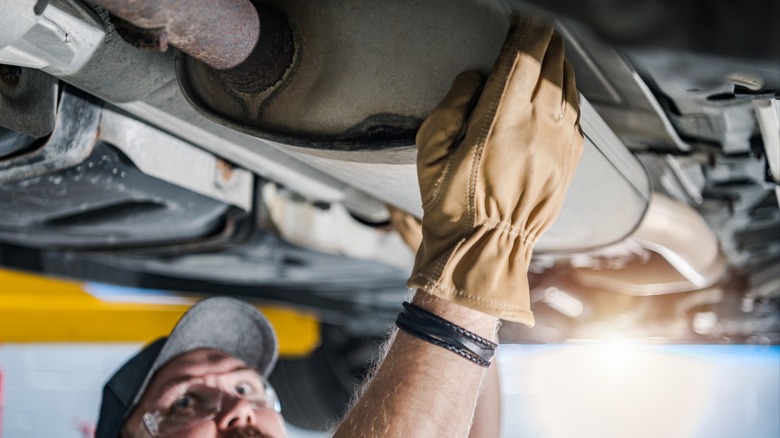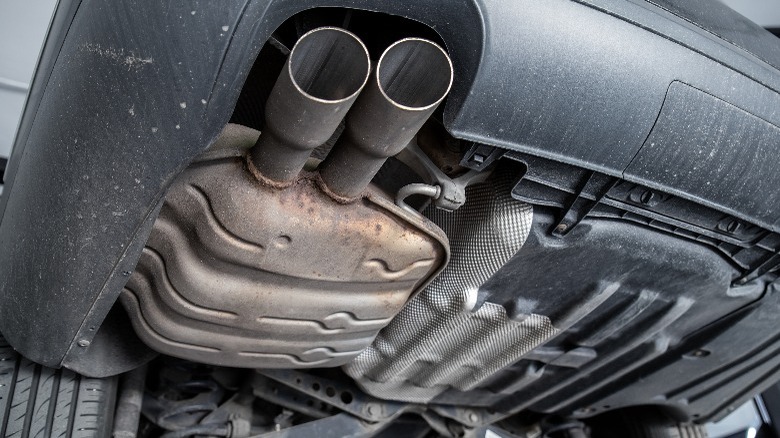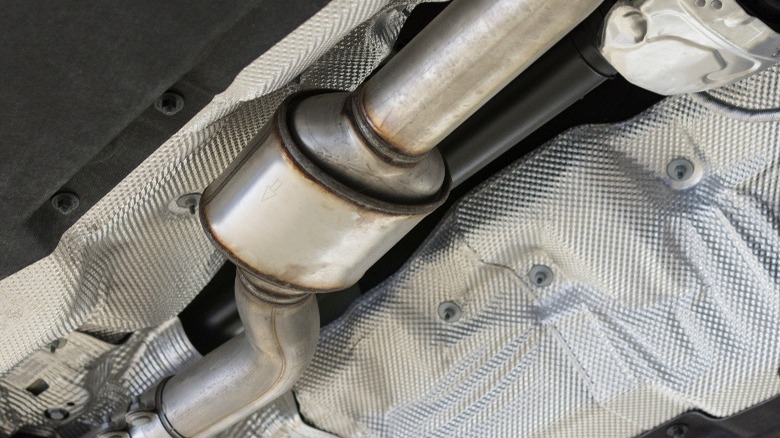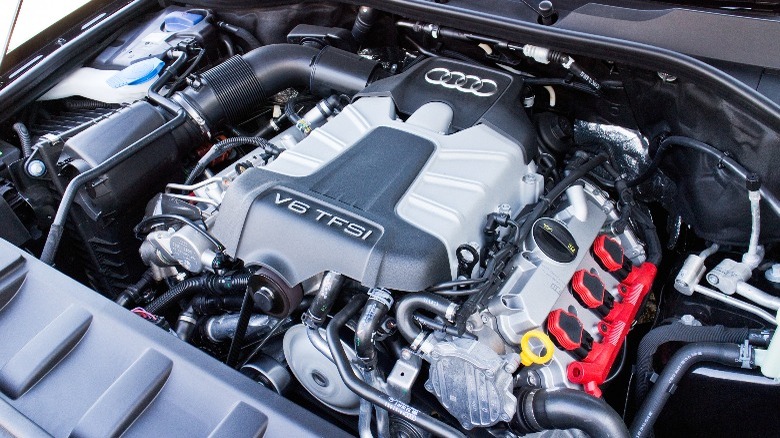Should You Install A Downpipe On Your Turbocharged Car?
The automotive world offers a plethora of options for enthusiasts looking for high-end specs. Generally, there are two ways to go about it: buy a performance car or build one. If you're new to car modification, you don't necessarily have to rebuild the engine to make your ride go faster. Instead, you can always kickstart your journey with easy and affordable mods that give your car a boost.
Installing a downpipe is popular among car enthusiasts who drive turbocharged vehicles. A downpipe consists of tubing sections that connect the exhaust manifold to the exhaust side of a turbocharger, allowing your engine to breathe out emitted gasses more smoothly. Not only does this give your car a better exhaust sound, but it also increases low-end torque and engine output.
However, installing a downpipe can cause some troubles and headaches. Removing or recalibrating the catalytic converter in some regions is illegal for road cars. Therefore, you must be extra careful in modifying your exhaust pipes based on your needs and goals. Otherwise, you might face the law or damage your ride. In this post, we'll go through everything you need to know about downpipes and their use in vehicles with forced induction.
What is a downpipe?
Before you learn about downpipes, you must understand how turbochargers work. In short, turbos come with two turbines that are connected. One of them is connected to the exhaust system and spools when the engine emits exhaust gases, which causes the other one to spin as well. The other turbine sucks fresh air in and forces it into the engine, allowing your car to breathe in more oxygen and ultimately perform significantly better.
On the other hand, the exhaust system lets the powertrain breathe out all the emitted gases that come from burning fuel in the cylinders. Breathing these gasses out is just as vital as breathing fresh air in. Not having a proper exhaust flow can choke up your car, leading to a significant drop in performance and a lot of back pressure on the engine.
Catalytic converters (also known as CATs) are some of the early pipes that exhaust gasses go through before they eventually get out of the exhaust tip. The role of a catalytic converter is to regulate your vehicle's emissions so less dangerous gasses with fewer smells come out of your powertrain. On the downside, they restrict air from getting out as freely as possible, making breathing out more challenging for the engine.
You can swap the stock catalytic converter in your car with a downpipe, which is often a wider piping system with less restrictive parts, to let the air flow more efficiently, letting your engine breathe out better.
The difference between catted and catless downpipes
Generally, there are two kinds of aftermarket downpipes: catted and catless, referring to whether the downpipe has its own catalytic converter or not. The right model depends on your car, budget, and intended use. Models that feature a catalytic converter have more restrictions and, therefore, offer a smaller boost in performance. Most aftermarket catted downpipes come with high-flow cats, which are generally less restrictive than stock catalytic converters.
On the other hand, catless downpipes don't have any restrictions for filtering exhaust fumes and offer much better flow. This prevents your engine from overheating, allows for better aspiration, and results in more torque and horsepower. While favorable, certain drawbacks of catless downpipes make some car owners turn catless downpipes down and opt for catted models.
First and foremost is keeping up with emission regulations. Many states and regions have strict rules regarding catalytic converters in cars. When exhaust fumes come out without going through cat filters, they include significantly higher counts of air-polluting particles.
Besides filtering toxic chemicals, another task that catalytic converters do is reducing the unpleasant odors of exhaust gasses. Cars with catless downpipes emit exhaust fumes with generally stronger odors. Because of these drawbacks, catless downpipes are mainly used on track-oriented cars and off-roaders.
Which cars benefit from having aftermarket downpipes?
Usually, most new performance-oriented cars come with impressively decent tuned exhaust systems, meaning that you don't necessarily have to look for aftermarket parts to let the car breathe with ease. The exhaust system in the new Mercedes AMG GT, for instance, gives a head-turning exhaust note and is reliable enough for those who want to test its limits on the track. Opting for an aftermarket downpipe in newer cars can result in a 5- to 10-horsepower boost.
On the other hand, the torque and engine output boost on older cars is much more significant when upgrading the exhaust system. Moreover, some cars are notorious for having too many restrictions on their catalytic converters, resulting in reduced performance and too much heat when pushed to the limits.
Although powerful, Audi 3.0T engines come with restrictive catalytic converters that tend to overheat and cause a lot of back pressure. According to the aftermarket retailer Canadian Auto Performance, many owners have no choice but to install test pipes as a replacement. So, if you're an Audi 3.0T owner and want consistent and reliable performance from your car, you might want to install an aftermarket downpipe as your next modification. Depending on the material and the brand, the price can vary, but you can find a decent downpipe for roughly $530 in the North American market, making it one of the relatively affordable ways to boost HP. Depending on your build, you can expect anywhere from 30 to 50 added horsepower.



